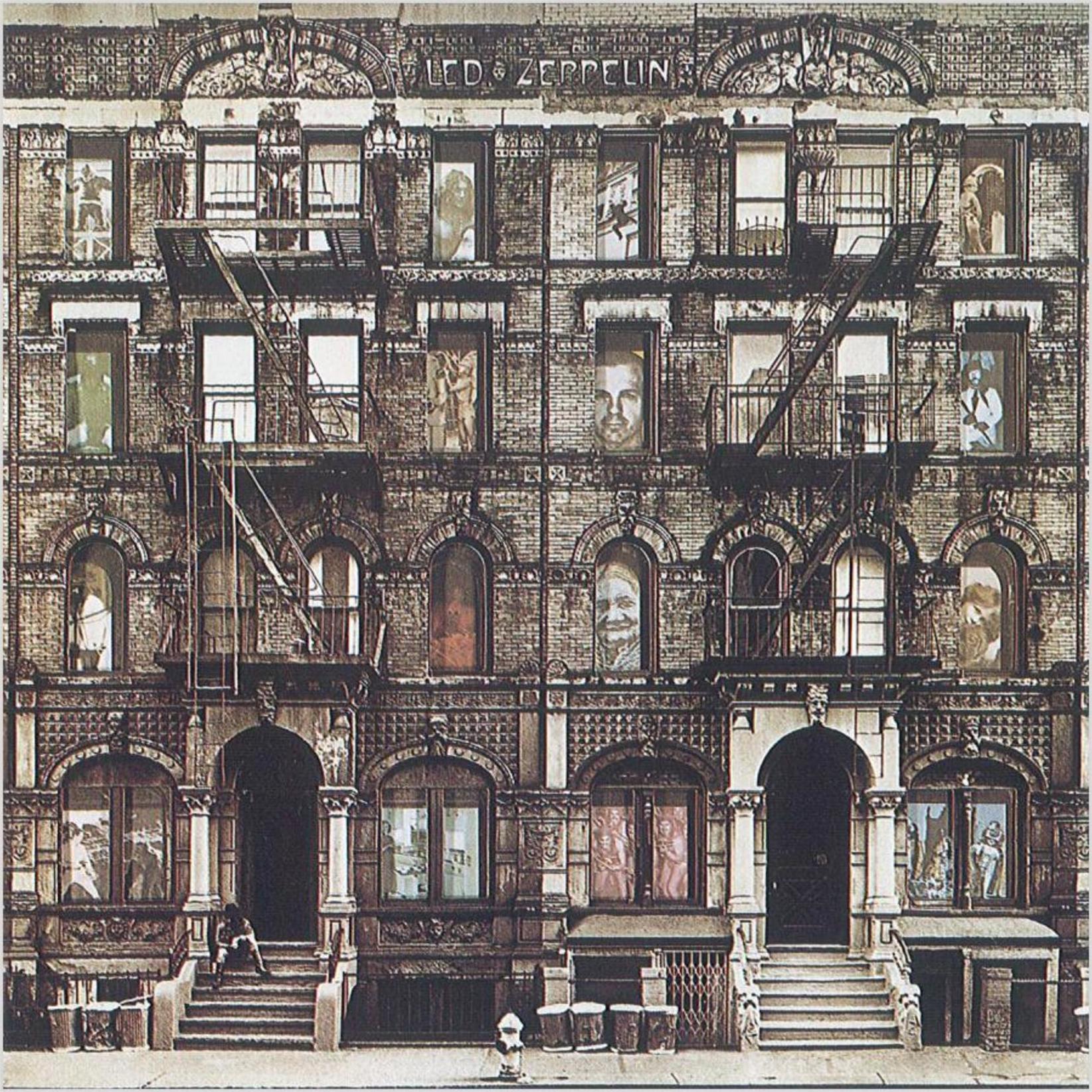Physical Graffiti is one of those albums whose reputation as an all out classic has snowballed since the start of the millennium, to the point where certain elements of their fandom will pick up the pitchforks and defend its reputation with their final breaths. It is home to a fair few of their indisputable classic tunes, and due to its nature as a double album, arguably the band’s most wide-ranging release, running the gamut of styles that they had covered on their five previous albums. Any album that can boast brilliant tunes as diverse as “Kashmir” and “Boogie With Stu” is pretty much automatically a classic. What Physical Graffiti isn’t, is a flawless classic.
With Led Zeppelin’s follow up to Houses of the Holy being the band’s first release on their own Swan Song imprint, and the third on the label following The Pretty Things’ Silk Torpedo and Bad Company’s eponymous debut, the pressure was on for it to make a big impact, doubly so because so many of their contemporaries were aiming for Zeppelin’s long-held reputation as the biggest band in the world, with the biggest threat coming from follow singles-avoiders, Pink Floyd. With the stakes being so high, it probably influenced Jimmy Page’s decision that their next album should be a double album, a format which precious few rocks and roll acts had pulled off without any embarrassment, with even fellow big hitters like Bob Dylan and The Beatles failing to hit the mark square on. It wasn’t an impossible task, after all Elton John’s Goodbye Yellow Brick Road had proved that if you had a strong enough range of material, a truly great double album was possible, and even that had the horrific misfire that was “Jamaica Jerk Off”, so you really did have to be at the very height of your creative powers.
The trouble was, at this point Led Zeppelin had enough new material for three sides of vinyl, and of that, there were enough truly top-draw tunes for an absolutely mind-blowing single album that would blow their peers completely out of the water. Sadly the pressure to make a head-turning spectacle must have got to the band, as the decision was made to resurrect material that had been written for their previous albums to pad out the new material and justifying the double album format, rather than strip it down to a single flawless album. As a result, Physical Graffiti is an album bulging with great tunes, immense epics, more light-hearted moments, and an undeniable sense that maybe, just maybe, this is all being dragged out just a little bit.
The thing is, Led Zeppelin were on such a creative roll at this time, that there’s not one song on Physical Graffiti that is devoid of brilliance, it’s just that some have beginning to end brilliance, while on others there are just flashes. Then again, without this ebb and flow of greatness, Physical Graffiti would be an absolutely exhausting listen, as one of its strengths is its diversity. From the funk-flecked rocking of “Trampled Underfoot”, to the almost poppy “Night Flight”, to the acoustic prettiness of “Bron-Yr-Aur”, to the barrelling piano party rock and roll of “Boogie With Stu”, and the unrelenting heaviness of “Kashmir”, Physical Graffiti is overflowing with brilliance, but too much so. There are no less than three eight minute plus epics across its two discs, of which only “Kashmir” can really justify being that long, with both “In My Time of Dying” and “In the Light” requiring some harsh but much-needed pruning back. Listening to Physical Graffiti, you have to admit that the punks had a point about the bloated rock dinosaurs of yesteryear.
Somewhere in the sprawl of Physical Graffiti is the best album Led Zeppelin ever recorded, as well as another albums worth of material that could stand proudly alongside their last two studio albums. There are no songs on Physical Graffiti that should have been left on the post-production room floor never to be heard again, but half of them needed either severe editing, or another revision before they achieved true greatness. As it was, when it came to Physical Graffiti Led Zeppelin opted to make the biggest splash instead of the most impressive splash.
Size isn’t everything you know.














No Comment